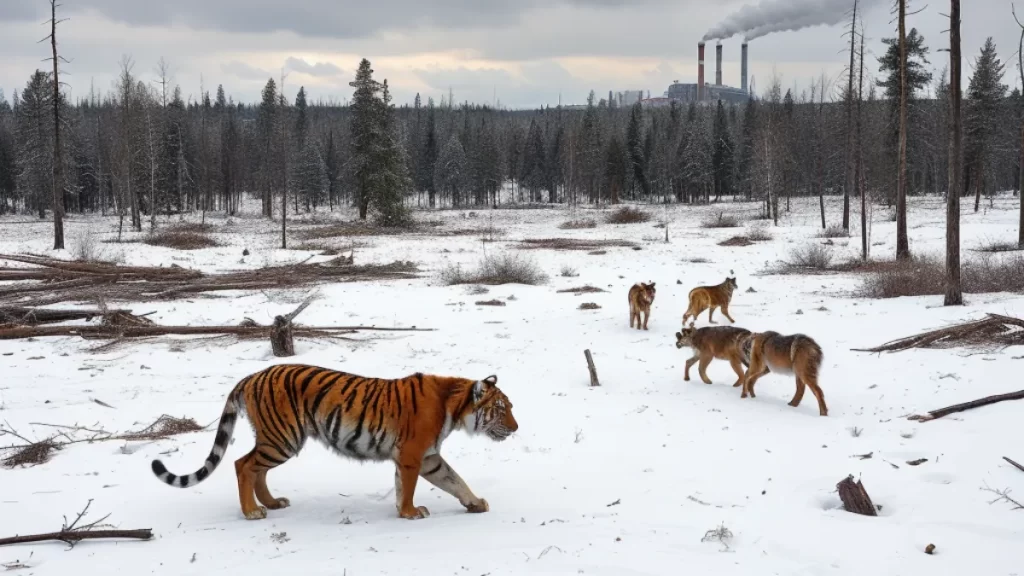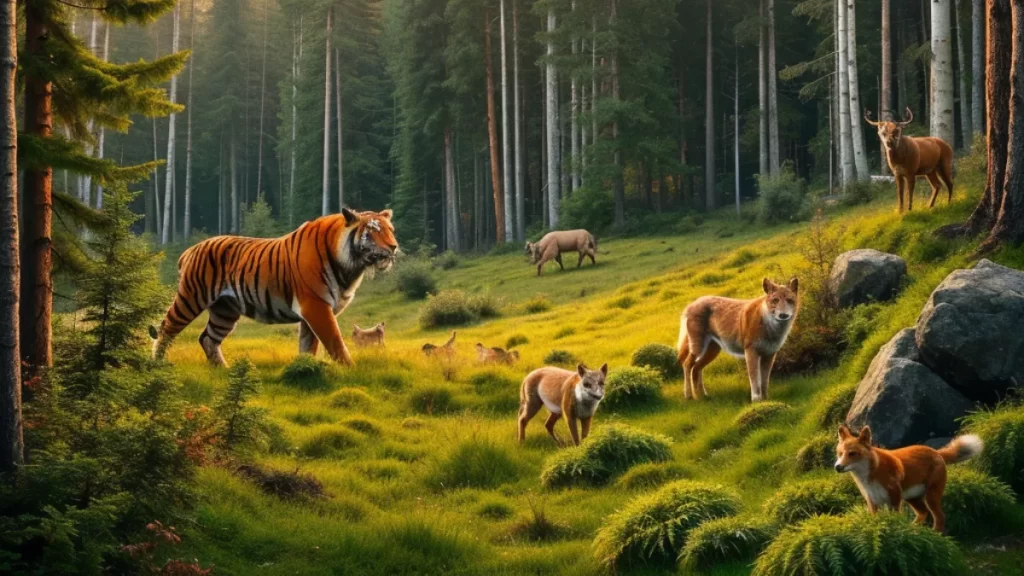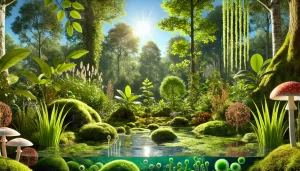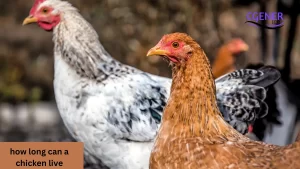Table of Contents
The taiiga, known as the boreal forest, is one of Earth’s most fascinating and expansive ecosystems. It stretches across the northern hemisphere, covering parts of Canada, Russia, and Scandinavia. Within this vast, often harsh environment lies a delicate and intricate food chain that supports a wide array of wildlife. In this article, we will explore the food chain of the taiiga, uncovering the survival secrets that keep this ecosystem thriving.
What is the food Chain of the Taiiga?
The taiga is a unique environment characterized by its cold climate, coniferous forests, and short growing seasons. Despite these challenging conditions, the taiga is home to various plants and animals that have adapted to survive. The taiga’s food chain is the foundation of life in this biome, linking every creature in a web of energy transfer from one species to another.
Producers in the Taiga: The Foundation of Life
At the base of the food chain of the taiiga are the producers—plants that convert sunlight into energy through photosynthesis. The most common producers in the taiiga are coniferous trees like spruces, pines, and firs. These trees are incredibly resilient, with needle-like leaves that help conserve water during long, harsh winters.
- Mosses and Lichens: The Unsung Heroes
- Beneath the towering trees, mosses and lichens cover the forest floor. These low-growing plants are vital to the food chain of the taiiga because they provide food for herbivores and help prevent soil erosion. They also play a critical role in the nutrient cycle by breaking down dead organic matter.
- Berries and Shrubs: Seasonal Delights
- The taiiga comes alive in the summer with berries and shrubs like blueberries, cranberries, and lingonberries. These plants provide essential nutrients to animals like bears and birds, making them a crucial part of the food chain of the taiiga.
Herbivores: The Primary Consumers
Herbivores are the first consumers in the food chain of the taiiga, feeding directly on the producers. These animals are well-adapted to the taiga’s environment, with thick fur coats and the ability to survive on a diet of tough, fibrous plants.
- H3: Moose and Elk: The Giants of the Taiiga
- Moose and elk are some of the giant herbivores in the taiiga. They primarily feed on the leaves, bark, and twigs of trees and shrubs. Their diet includes a significant amount of coniferous trees, making them a critical link in the food chain of the taiiga.
- H3: Snowshoe Hares and Voles: The Small Yet Significant
- Smaller herbivores like snowshoe hares and voles play a crucial role in the food chain of the taiiga by providing food for various predators. These animals feed on grasses, shrubs, and tree bark, contributing to energy transfer within the ecosystem.
Carnivores: The Hunters of the Taiiga

Carnivores, or secondary consumers, are the predators that keep the herbivore population in check. They are essential to maintaining the balance of the taiiga food chain.
- Wolves: The Apex Predators
- Wolves are the top predators in the taiga. They hunt in packs, taking down large prey like moose and elk. Wolves play a crucial role in the food chain of the taiiga by regulating the population of herbivores, ensuring that the ecosystem remains balanced.
- Lynx and Owls: The Stealthy Predators
- Lynx and owls are more solitary hunters, preying on smaller animals like snowshoe hares and voles. These predators are highly adapted to the taiiga environment, with keen senses and camouflaged fur or feathers that help them stalk their prey. They are essential components of the taiiga food chain.
Scavengers and Decomposers: Nature’s Recyclers
No food chain of the taiiga would be complete without the scavengers and decomposers that break down dead plants and animals, returning nutrients to the soil and ensuring the continued health of the ecosystem.
- Ravens and Wolverines: The Clean-Up Crew
- Ravens and Wolverines are some of the taiga’s most effective scavengers. They feed on the remains of animals left behind by predators, playing a vital role in the food chain of the taiiga by preventing the spread of disease and speeding up decomposition.
- Fungi and Bacteria: The Silent Decomposers
- Fungi and bacteria are the final links in the food chain of the taiiga. These organisms break down organic matter into nutrients that enrich the soil, supporting plant growth and completing the life cycle in the taiiga.
The Delicate Balance: Threats to the Taiiga Food Chain

The food chain of the taiiga is a delicate balance, and it is vulnerable to various threats. Climate change, deforestation, and human activities impact the taiga ecosystem, disrupting the natural order and putting species at risk.
- Climate Change: A Looming Threat
- The ecosystem of the taiiga is altered by rising temperatures and shifting precipitation patterns, which impacts the availability of food for both herbivores and carnivores. This disturbance may cause the food chain in the taiiga to collapse, which might have disastrous effects on the ecosystem as a whole.
- Human Impact: Deforestation and Pollution
- Human activities, such as logging and mining, are leading to the destruction of taiga habitats. This reduces the amount of available land for animals and disrupts the food chain of the taiiga by removing key species and altering the natural landscape.
Also Read: Mission Style Furniture Period History: Uncover Timeless Elegance
The Future of the Taiiga Food Chain
The food chain of the taiiga is a remarkable example of nature’s ability to adapt and survive in some of the most challenging conditions on Earth. However, this delicate balance is under threat from various factors, many of which are human-induced. To ensure the taiga’s and its inhabitants’ survival, we must protect this unique ecosystem and preserve the intricate web of life that makes up the food chain of the taiiga.





